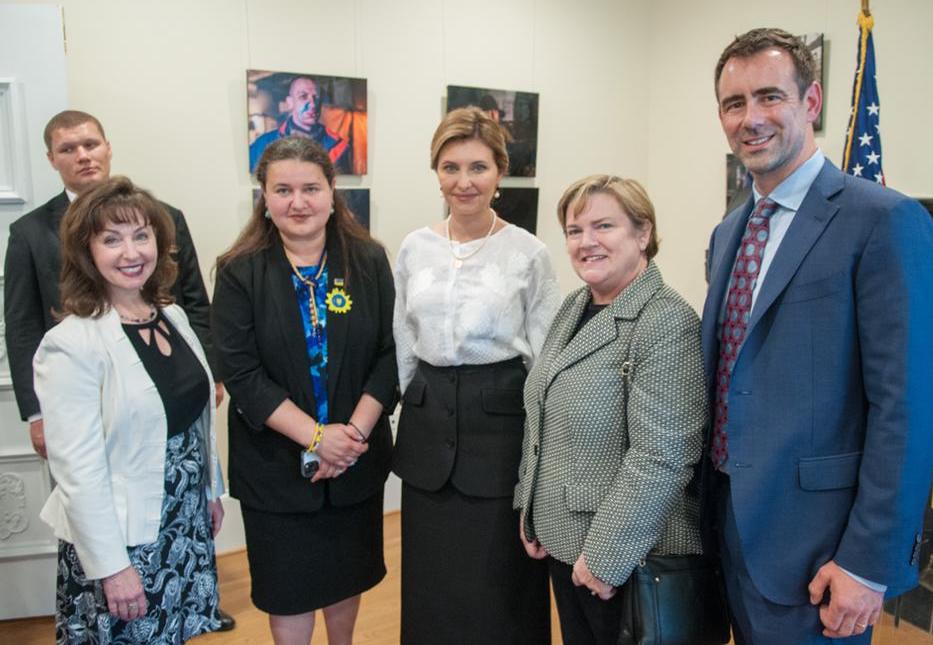
Scorecard shows millions of young people will not have skills they need for future jobs
The Global Business Coalition for Education (GBC-Education)
The new report reveals the sheer pace of technological change means many children and youth in developing countries are in danger of being left behind.
Did you know that in 25 years, two-thirds of today’s five-year-olds will be in jobs that don’t exist today?
The pace of technological change is so fast that millions of our familiar jobs will be wiped out in the next few years. That means young people need to acquire the right skills to succeed in the future workplace.
The children most at risk of missing out are in developing countries, especially those with rapidly-growing youth populations.
So are those nations on track to ensure the young people of today are gaining the education and skills they need for the jobs of tomorrow?
Large parts of the world are failing badly, according to a report published today. More than two-thirds of children in low-income countries – many of them in sub-Saharan Africa and the Middle East – will not be on track to have the skills they need to succeed in the workplace of 2030.
In lower-middle-income countries this figure is 60% and for upper-middle-income countries it is around 40%.
The statistics are revealed in the 2030 Skills Scorecard, published today by the Global Business Coalition for Education – a movement of businesses committed to ending the global education crisis – and the Education Commission, a global initiative to encourage greater progress on ensuring every child gets quality learning.
“The dramatic pace of change in technology, automation and robotics means hundreds of millions of children and youth are in danger of being left behind,” said Jamira Burley, Head of Youth Engagement and Skills at GBC-Education.
“The trend is alarming – by 2030 more than half of the world’s young people will not have the most basic skills they need to prosper in the workplace.”
Justin van Fleet, Executive Director of GBC-Education, said: “The 2030 Skills Scorecard shows that in many parts of the world, the picture looks bleak. Action is needed urgently and the global business community can be a major part of the solution by giving young people the skills need to fulfil their potential and have a future.”
Theirworld’s Code Clubs – which operate in several countries – are an example of ensuring youth have the skills they need to succeed in future employment.
The Code Club in Harare, Zimbabwe, has been working with the Econet Foundation to help young women aged 16 to 20 from vulnerable and disadvantaged backgrounds. The focus is on an in-depth coding curriculum, learning the HTML and CSS coding languages and the basics of web design.
The Harare Code Club also has a group of younger girls aged 10 to 12, who learn how to build a kit computer and use coding apps.
Here are the basic findings of the 2030 Skills Scorecard by region.
Sub-Saharan Africa
Children on track to complete secondary school and attain basic skills: now – 9%, 2030 – 17%. School-age children by 2030 – 426 million.
Already the world’s youngest region with three-fifths of its population under 25. In the coming decades, one-third of global youth will live here. It will be home to the largest concentration of young people not prepared with the skills to participate productively in the workforce.
Middle East and North Africa
Children on track to complete secondary school and attain basic skills: now – 36%, 2030 – 57%. School-age children by 2030 – 102 million.
Has the highest levels of youth unemployment of any global region – with fewer than one in four of those aged 15 to 24 working. This is mainly driven by female youth unemployment. Projected learning levels by country are mixed, with strong progress in some nations and stagnation in others – especially those affected by conflict and impacted by the refugee crisis.
South Asia
Children on track to complete secondary school and attain basic skills: now – 26%, 2030 – 46%. School-age children by 2030 – 404 million.
Home to the largest number of young people of any region, with almost half of its population of 1.9
billion below the age of 24. Youth unemployment remains high at 9.8%. The projected proportion of children and youth completing secondary education and learning basic secondary skills is expected to more than double by 2030 – but still fewer than half are on track to achieve the skills needed.
Latin America
Children on track to complete secondary school and attain basic skills: now – 37%, 2030 – 50%. School-age children by 2030 – 102 million.
There must be a greater focus on quality education and increasing the number of skilled workers – with many firms reporting they struggle to find employees with the right skills. Only half of school-age youth are estimated to be on track to achieve the needed skills by 2030.
East Asia and Pacific
Children on track to complete secondary school and attain basic skills: now – 30%, 2030 – 79%. School-age children by 2030 – 325 million.
The region is characterised by great diversity in terms of demographics and socio-economic progress. But common challenges related to technological change, employment landscape, and skills shortages are present throughout.
A majority of more populous low- and middle-income countries in the region – like Vietnam, Indonesia and Philippines – will see strong improvement in skill levels by 2030.
More news

